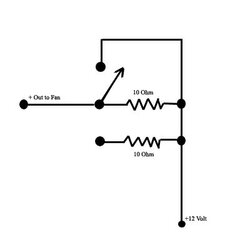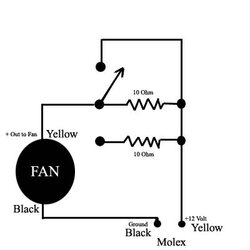- Joined
- May 7, 2004
- Location
- Eastern Pennsylvania
Im planning on using 2x 120mm fans outside the case using a 12 volt 1500ma ac/dc converter. The fans are 12volts .52 amps. I want to be able to switch the fan from 12v to 9 to 7.5v using a 4 position switch. I want to use resistors for the power drops and not a rheobus. I know I will need an 8ohm and 6.8ohm resistor.
The question...... Im not sure what wattage I should get. Calculations said I will need something at least 5 watts but the ones at radioshack are only ¼ ½ and 10 watts. Would a resistor rated to 10 watts affect the resistance? If so where could I get one at 5 watts? I went to mouser.com and there were soooooooooooo many options it just confused me.
Also thinking about undervolting a D4 waterpump if its too loud for me at night so this would help with that as well.
Any help would be appreciated.. Thanks
JT
The question...... Im not sure what wattage I should get. Calculations said I will need something at least 5 watts but the ones at radioshack are only ¼ ½ and 10 watts. Would a resistor rated to 10 watts affect the resistance? If so where could I get one at 5 watts? I went to mouser.com and there were soooooooooooo many options it just confused me.
Also thinking about undervolting a D4 waterpump if its too loud for me at night so this would help with that as well.
Any help would be appreciated.. Thanks
JT



